HeatWave is the only fully managed MySQL database service that combines transactions, analytics, machine learning, and GenAI services, without ETL duplication. HeatWave also includes HeatWave Lakehouse, allowing users to query data stored in object storage, MySQL databases, or a combination of both. Users can deploy HeatWave MySQL–powered apps on a choice of public clouds: Oracle Cloud Infrastructure (OCI), Amazon Web Services (AWS), and Microsoft Azure.
In today’s business landscape, the requirement for scalable, dependable, and cost-effective cloud services is increasingly crucial for both startups and established corporations. To address this growing need, Oracle Cloud Free Tier offers a range of always-free services and resources on their platform, enabling users to explore, test and experience the service without any cost.
The HeatWave Service is available in the Oracle Cloud Free Tier. This means that you can now access HeatWave Always Free Resources and provision them in your tenancy.
This presents a remarkable chance for individuals, developers, and small enterprises to explore and acquire practical knowledge of the HeatWave capabilities. The HeatWave Always Free Tier provides an extensive array of resources, including a DB system, automatic backups, final backup, HeatWave clusters, and more.
Is it possible for your business to endure without being able to access its data? We have our doubts. Unexpected events occur, and they are unavoidable. Implementing effective backup and disaster recovery strategies is crucial for ensuring the long-term sustainability of your business. Moreover, it reduces the amount of time that business operations are disrupted, thus minimizing downtime.
This blog post explores the various aspects of backup and disaster recovery assistance provided in the HeatWave Always Free Tier. We take a close look at the backup feature, its benefits, and how it can empower businesses and developers to leverage the cloud for their projects.
Automatic Backups
HeatWave Always Free Tier provides an Always Free DB system with MySQL.Free shape for all tenancies. Once created, the Always Free DB system will include automatic backups that are enabled by default. These automatic backups are scheduled daily at no additional cost. It is not possible to disable these automatic backups, and the retention period is fixed to one day. If an automatic backup creation fails, the retention period for the previous active automatic backup, if one is present, will be extended to the following day. When deleting an Always Free DB system, the automatic backups will be retained unless you have chosen to delete them in the Deletion plan. With the support of daily backups, you can recover the data with minimum data loss, allowing you to have a recovery point objective (RPO) of 24 hours.
We’ve made our best effort to ensure that automatic backups are taken for Always Free DB systems. Do note that the scheduling priority for free backups will be lower compared to that of paid customers.
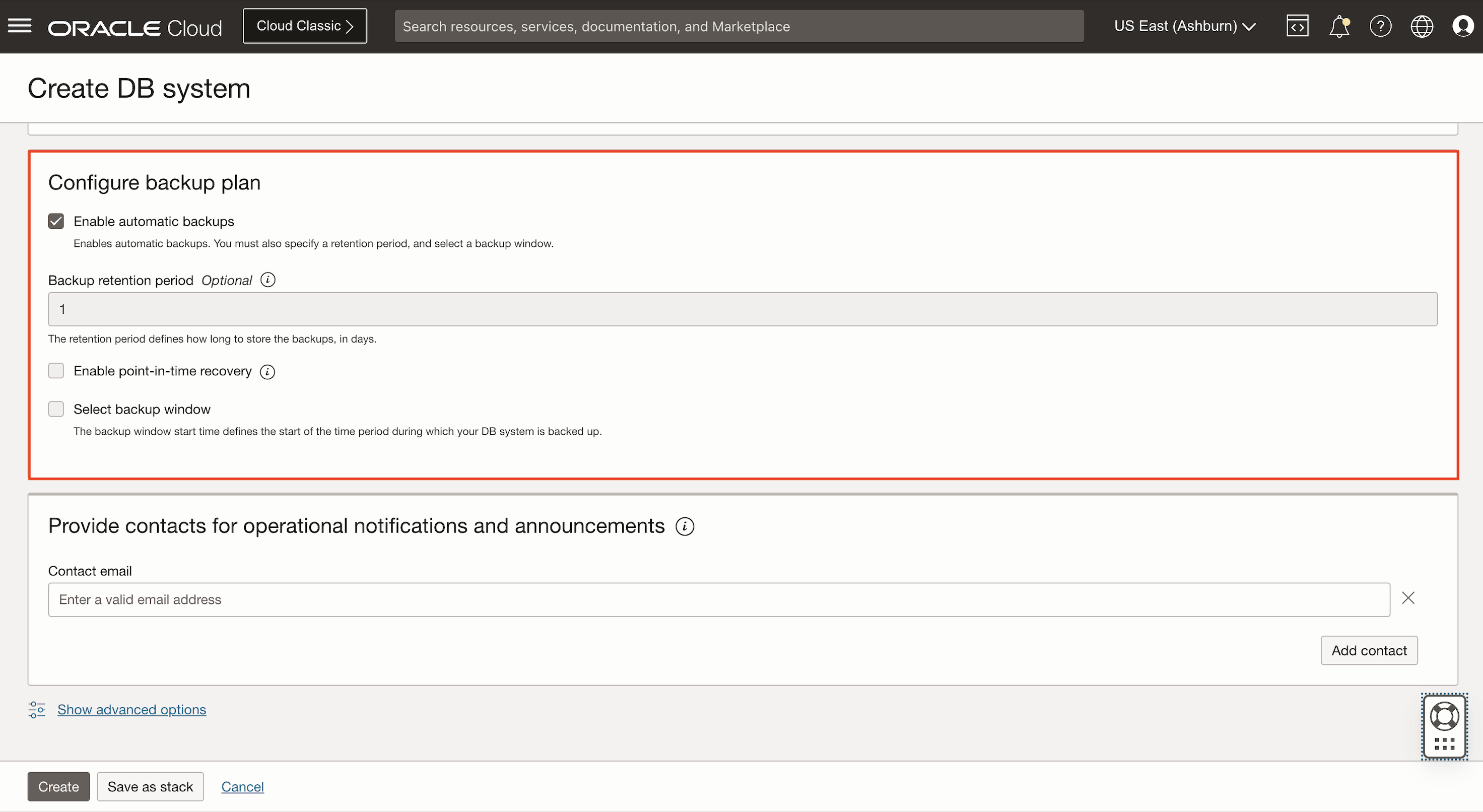
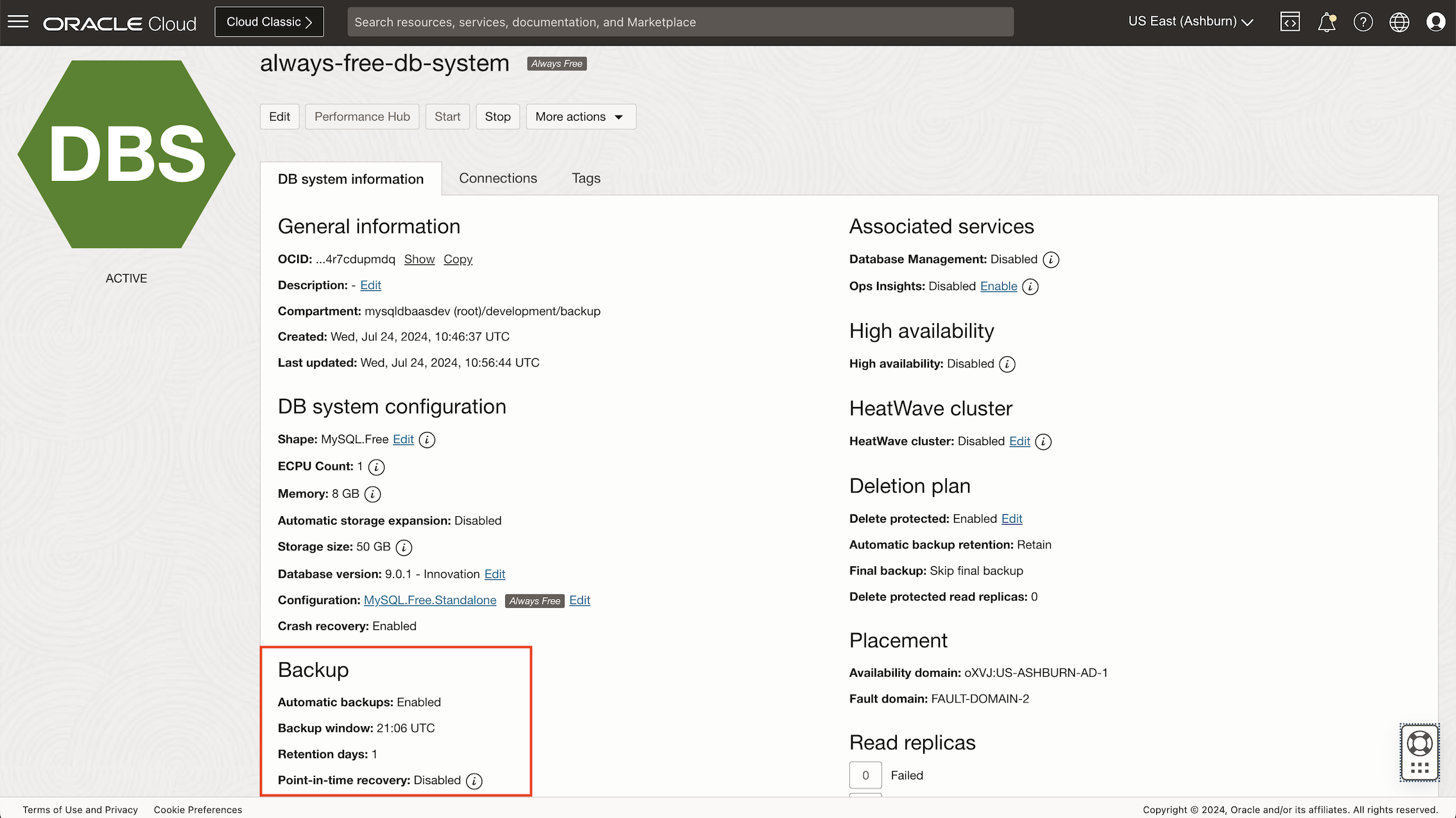
Final Backup
By default, the Require final backup option is not selected under the Deletion plan in an Always Free DB system. Customers have the flexibility to adjust the Deletion plan to include the final backup if needed. The final backup has a set retention period of 7 days which cannot be changed. The final backup is permitted during the deletion of an Always Free DB system, provided that the total storage used for Always Free backups for the tenancy is under 50GB.
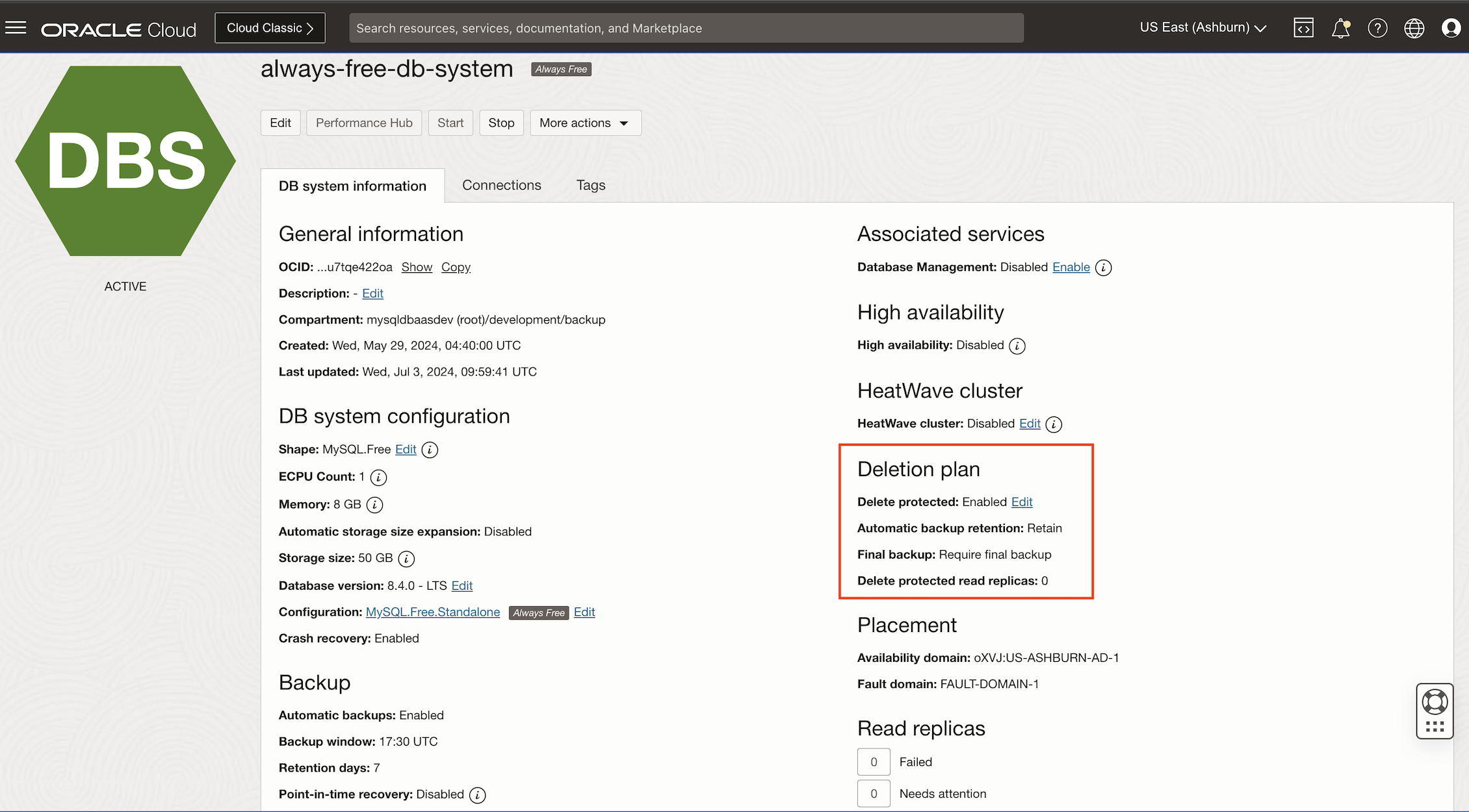


Restoring From a Backup
It is possible to create a fresh DB system using a backup of an existing Always Free DB system. In the case of having an Oracle Cloud Free Tier account, the backup of an Always Free DB system can only be utilized to restore and create another Always Free DB system. Conversely, if you possess a paid account, you have the option to restore an Always Free DB system backup in order to create an Always Free DB system or a paid DB system.
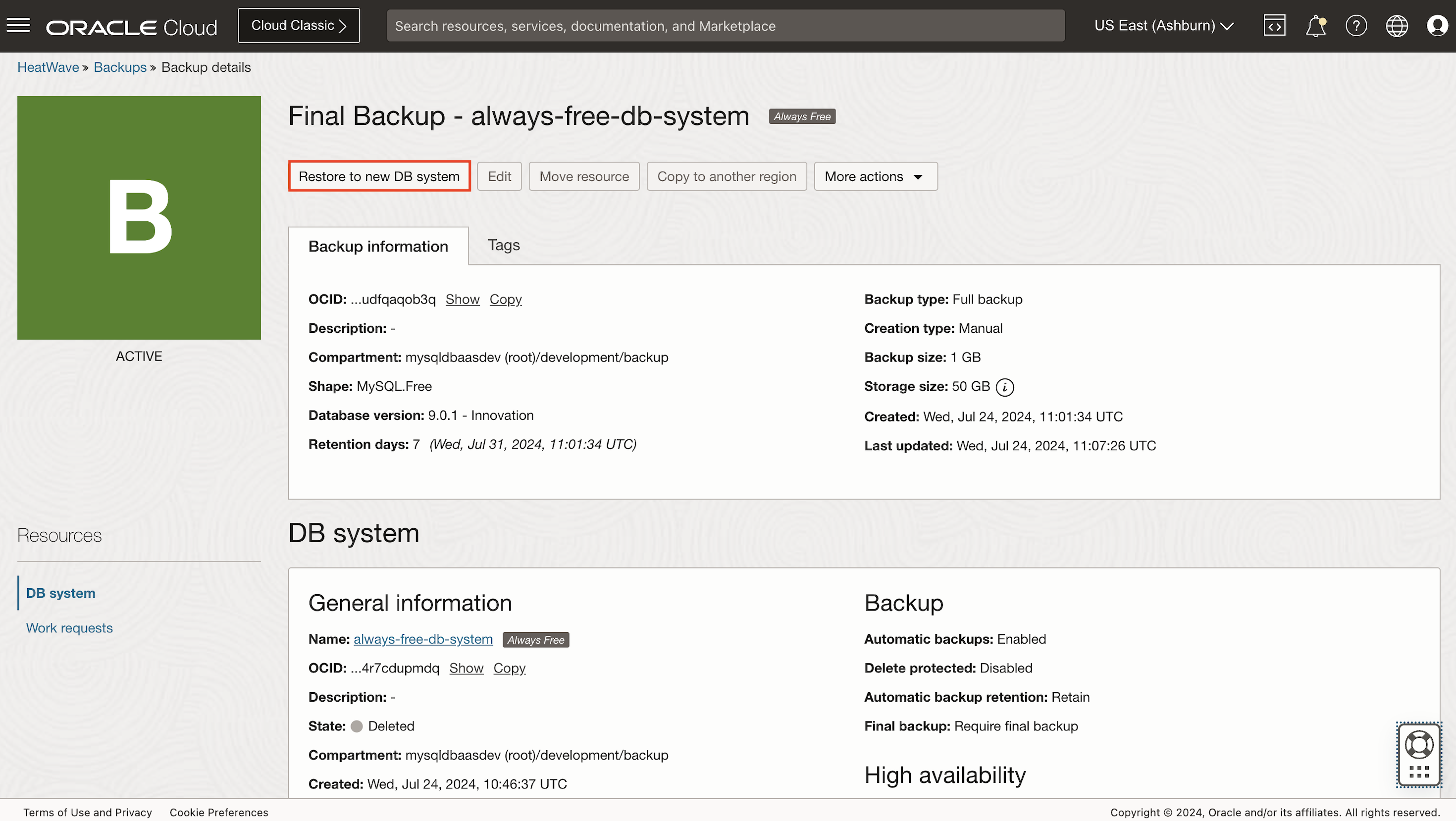

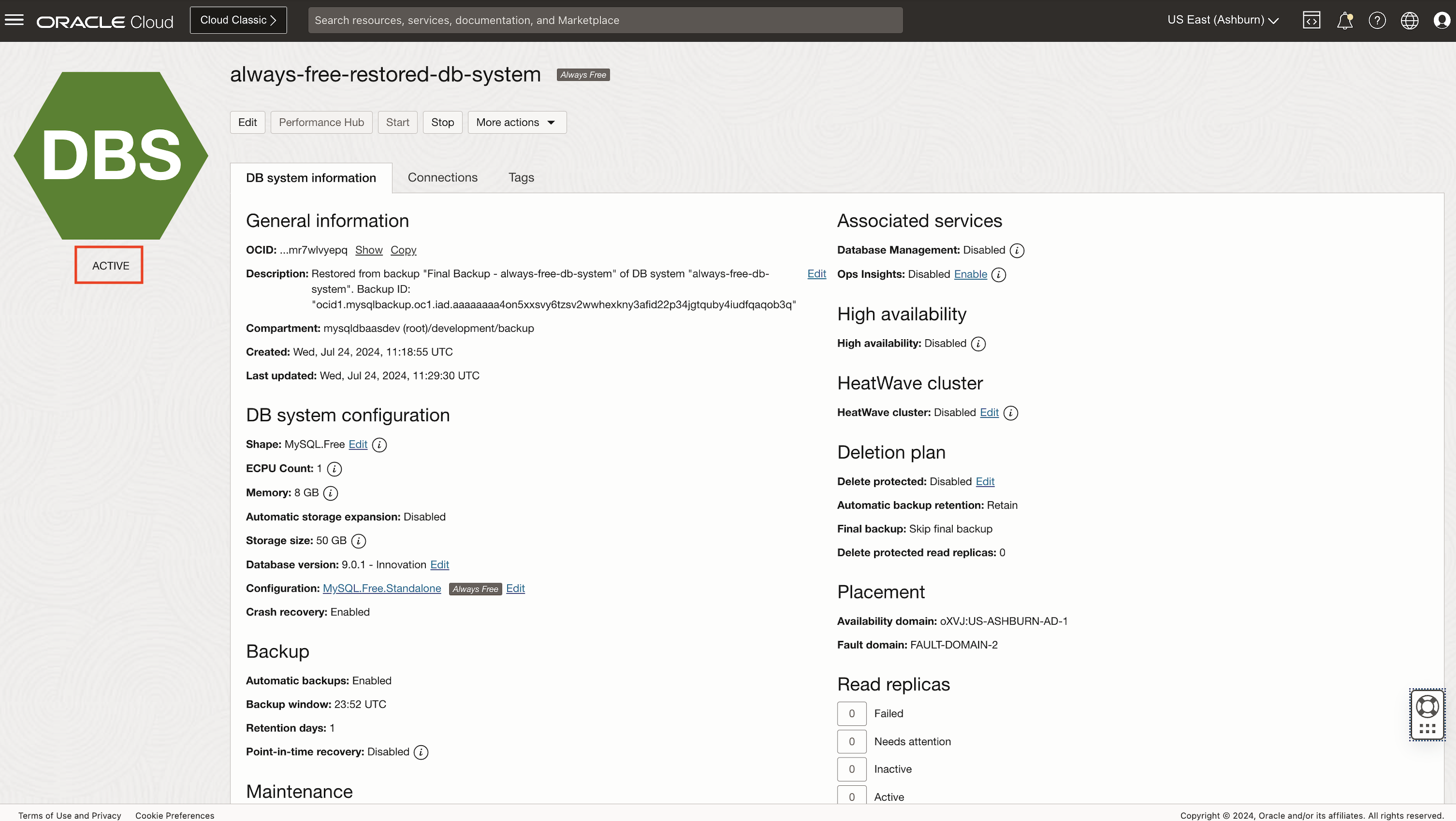
Limitations and Upgrading
Although the HeatWave Free Tier offers a substantial amount of resources for backup and disaster recovery, it does have certain restrictions. Please also be aware of the prioritization of automatic backups as detailed in the Automatic Backups section, as well as the storage capacity limit for the final backup specified in the Final Backup section.
The restrictions are suitable for small-scale projects and testing, but if you need more than what the Free Tier offers, Oracle Cloud offers upgrade possibilities. By switching to a paid plan, you can access more resources, advanced functionalities, and support. Several of these include
- Creating a manual backup of a DB system.
- On-demand copy of backups to another region.
- Moving the backups to another compartment.
- Updating the backups to edit the display name, description and retention period.
- Changing the backup plan of a DB system.
- Point-in-time recovery support, allowing users to restore data to a new DB system at the most recent available point-in-time or at a specific point-in-time.
Summary
As more and more crucial data is produced and preserved, safeguarding its security has emerged as a primary concern for cloud enterprises. It is essential to have effective backup and disaster recovery procedures in place to mitigate potential disasters that could otherwise have catastrophic consequences.
The HeatWave Free Tier offers a unique opportunity for individuals, developers, and small businesses to explore the functionalities of HeatWave without incurring any costs. Whether you are interested in delving into cloud technologies or starting a small project, the HeatWave Free Tier offers a comprehensive environment to meet your needs. Therefore, register for an Oracle Cloud account, discover the various possibilities, and unleash the potential of HeatWave.
For more information, see Overview of Backups, Managing a Backup, Restoring From a Backup and Oracle Cloud Free Tier.
